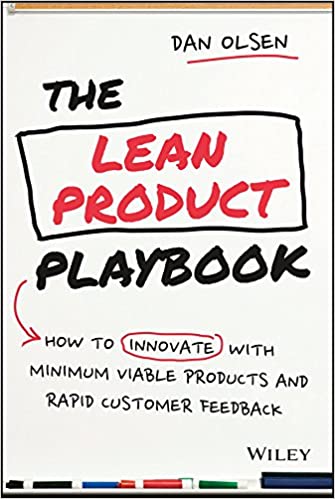
How to apply lean startup principles in product management? In his “The Lean Product Playbook,” Dan Olsen helps with that. The book guides us through a step-by-step framework to build successful products.
The Lean Product Process is a six-step approach that involves:
- identifying target customers,
- defining value propositions,
- specifying minimum viable product (MVP),
- creating prototypes,
- testing with customers,
- iterating based on feedback.
We can develop products that address customer needs and stand out by emphasizing rapid prototyping, testing, and iteration.
The book encourages a mindset of continuous improvement and adaptation. Ensuring that product teams can stay relevant and useful in a changing market.
Key takeaways from “The Lean Product Playbook”:
The Lean Product Process
Olsen introduces a six-step process for lean product development, including identifying target customers, defining value propositions, specifying MVP features, creating prototypes, testing with customers, and iterating based on feedback.
Problem-Space vs. Solution-Space
Understand the difference between the problem space (customer needs and desires) and the solution space (how your product addresses those needs). Successful products bridge the gap between the two spaces.
Target Customer
Identify and understand your target customer segments, focusing on their needs, pain points, and desires. This helps you create a product that truly addresses their needs.
Unique Value Proposition
Define a unique value proposition (UVP) for your product that communicates how it differs from competitors and why customers should choose it.
The Importance of MVP
Develop a minimum viable product (MVP) that delivers your customers the most critical features and value while minimizing development time and resources.
Rapid Prototyping and Testing
Use rapid prototyping and testing techniques to quickly learn from customers, validate hypotheses, and iterate on your product.
The Build-Measure-Learn Loop
Implement the Build-Measure-Learn loop in your product development process to continuously improve your product based on customer feedback and data-driven insights.
KPIs and Success Metrics
Establish key performance indicators (KPIs) and success metrics to measure the effectiveness of your product and inform decision-making throughout the development process.
Customer Development
Emphasize customer development by conducting interviews, surveys, and other research methods to gather valuable insights and feedback directly from customers.
Continuous Improvement
Adopt a mindset of continuous improvement by iterating on your product based on customer feedback, competitive analysis, and market trends, ensuring your product remains relevant and valuable to customers.